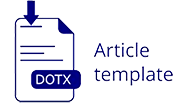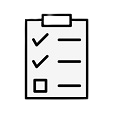THE EFFECT OF USING PEER FEEDBACK TECHNIQUE IN TEACHING WRITING AT ELEVENTH GRADERS OF SMA WALISONGO PECANGAAN IN THE ACADEMIC YEAR OF 2018/2019
Abstract
This study intends to find out the effect of using peer feedback technique for eleventh grade students of SMA Walisongo in writing explanation text. This study was conducted in Mei 2019 at SMA Walisongo Pecangaan. The researcher used quasi-experimental research. Forty four students were selected as the sample of this research. The sample included two groups, the experimental group and the control group. The experimental group was treated by using peer feedback technique, while the control group was not. The data were gathered through test, either pre-test or post-test. Pre-test was conducted before the treatment that has the purpose to know the basic students’ writing skill in writing explanation text. Post-test was conducted after the treatment. The goal of post-test was to find out the effect of peer feedback technique in students’ writing skill. In analyzing the data, the writer used normality test to reveal that the data has the normal distribution, homogeneity test to reveal that the samples has homogenous variant, and independent sample t-test for testing the hypothesis. The result showed the increasing students’ Mean score in experimental class, 68.86 for pre-test and 79.23for post-test. According to the t-test calculation in significance level of 5%, it showed the value of tobservation was higher than ttable ). It meant that the null hypothesis (H0)was rejected and the alternative hypothesis (Ha) was accepted. It concluded that teaching writing by using peer feedback technique is effective and give the positive result.
Keywords
Full Text:
PDFReferences
Barkley, E. F., Cross, K. P., & Major, C. H. (2005). Collaborative Learning Techniques: A Handbook for College Faculty. United States: Jossey Bass Inc.
Bijami, M., Kashef, S. H., & Nejad, M. S. (2013). Peer Feedback in Learning English Writing : Advantages and Disadvantages. Journal of Studies in Education, 3, 93–94. https://doi.org/10.5296/jse.v3i4.4314
Brookhart, S. M. (2008). How to Give Effective Feedback To Your Students. Alexandria: Assosiation of Supervision and Curriculum Development.
Broughton, G., Brumfit, C., Flavell, R., Hill, P., & Pincas, A. (2003). Teaching English as a Foreign Language (2nd ed.). London: Routledge.
Brown, H. D. (2004). Language Assesment: Principles and Classroom Practices (2nd Editio). New York: Longman.
Chiramanee, T. (2014). Journal Writing with Peer Feedback : A Friend or A Foe for EFL Learners. International Journal of English Language Education, 2(2), 142–153. https://doi.org/10.5296/ijele.v2i2.6038
Cinar, G., & Erdost, A. (2015). The effect of peer feedback on writing anxiety in Turkish EFL (English as a foreign language) students. Procedia - Social and Behavioral Sciences, 199, 531. https://doi.org/10.1016/j.sbspro.2015.07.543
Espitia, M. I., & Corzo, C. C. (2013). Peer-Feedback and Online Interaction: A Case Study. Ikala, 18(2), 131–151.
Gielen, S., Peeters, E., Dochy, F., Onghena, P., & Struyven, K. (2010). Improving the Effectiveness of Peer Feedback for Learning. Learning and Instruction, 20(4), 304–315. https://doi.org/10.1016/j.learninstruc.2009.08.007
Grami, G. M. A. (2010). The Effects of Integrating Peer Feedback into University-Level ESL Writing Curriculum : A Comparative Study in a Saudi Context. Newcastle University, Newcastle.
Harmer, J. (n.d.). The Practice of English Language Teaching (3rd ed.). Cambridge: Longman.
Harmer, J. (2004). How to Teach Writing. Edinburgh: Longman.
Hartono, R., & Purwanto, B. (2017). English Text Type (Theory, Practice and Teaching Approach). Semarang: Fastindo.
Hyland, K. (2003). Second Language Writing. Edinburgh: Cambridge University Press.
Hyland, K. (2006). English for Academic Purposes. New York: Routledge.
Iryanti, D. (2015). The Effectiveness of Peer Feedback in Improving Students’ Writing Achievement. Syarif Hidayatullah State Islamic University Jakarta, Jakarta.
Kantor, P. T. (2012). Development of Writing : Key Components of Written Language. Florida State University, Florida.
Kumar, R. (2011). Research Methodology (a step-by-step guide for beginners). New Delhi: Sage Publication.
Lin, G., & Chien, P. (2009). An Investigation into Effectiveness of Peer Feedback. Journal of Applied Foreign Languages Fortune Institute of Technology, 3(1983), 79–80.
Madehang. (2010). Teaching Writing Descriptive Text through Collaborative Learning. Palopo.
Oshima, A., & Hogue, A. (2007). Introduction to Academic Writing (3rd ed.). White Plains: Pearson Education Inc.
Rezeki, Y. S. (2017). Collaborative Written Feedback Experience : A Case Study of Indonesian EFL Students in an Essay Writing Class. International Journal of Educational Best Practices, 1(2), 24–37.
Richards, J. C. (n.d.). Methodology in Language Teaching (An Anthology of Current Practice). New York: Cambridge University Press.
Sackstein, S. (2017). Peer Feedback in the Classroom Empowering Students to Be the Experts. Alexandria: Assosiation of Supervision and Curriculum Development.
Sadler, R. K., & Hayllar, T. A. (2004). Text in Action 1: An English Workbook. Sydeny: Macmillan.
Sa'idah, N. (2017). Buku Ajar Statistik Penelitian. Yogyakarta: Diandra Kreatif.
Sholihah, L. (2015). The Implementation of Peer Feedback Strategy for Writing Instruction at the First Semester of Writing 1 Class at Muhammadiyah University of Metro. Premise Journal, 4(1).
Sugiyono. (2015). Metode Penelitian Kuantitaif, Kualitatif dan RnD. Bandung: Alfabeta.
Swick, E. (2009). Writing Better Englsih for ESL Learners (2nd ed.). United States: McGraw-Hill Companies, Inc.
DOI: https://doi.org/10.34001/edulingua.v6i2.1181
Article Metrics
Refbacks
- There are currently no refbacks.

Ciptaan disebarluaskan di bawah Lisensi Creative Commons Atribusi 4.0 Internasional.











